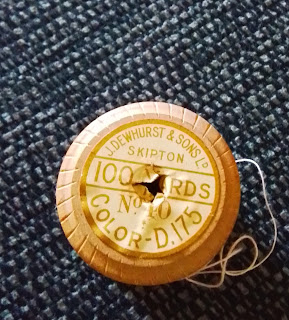Bagley and Wright of Oldham
Another one of the companies that became part of the English Sewing Cotton Company was Bagley and Wright of Oldham. Unusually, the founders of the company came from poor working class backgrounds. The entrepreneurs began their company in 1867 in the area of Werneth - taking advantage of the cotton boom that followed the end of the American Civil War. They developed a range of products including sewing cotton, embroidery thread, crochet thread and also fishing netting, for which they became particularly famous.
Bagley and Wright had branched into sewing thread in 1879, and this took off to such an extent that they were able to build their flagship site at Belgrave Mills shortly afterwards. Unfortunately, the new building fell victim to a tragedy in January 1883, when gales blew a piece of decorative stonework off the building and through the roof of the winding room. Two young women, Mary Ann Heathcote and Elizabeth Russell, were killed outright and several others suffered head injuries. A winding machine was also destroyed.
Nonetheless, the business boomed. Belgrave Mills were enlarged in 1895 and work also took place at Wellington Mill in Oldham. In 1886 Bagley and Wright bought Clappertons of Paisley and a spooling plant in Canada for their North American exports. In 1893, they bought a mill at Crooklands in the Lake District for making wooden bobbins.
On the formation of the English Sewing Cotton Company in 1897, Bagley and Wright both sat on the board, stepping down in 1902 after problems with American investments precipitated a review of operations. In 1905, the ESCC decided that in order to reduce some inefficiency and overheads, there would be a concentration of operations. Bagley and Wright was completely absorbed and Belgrave Mills closed down and were then sold off.
An engineering arm of the original firm continued in operation until 1924, but after that the name of Bagley and Wright was defunct.
https://www.etsy.com/uk/shop/SewSylko
Instagram: @sewingwithsylko






Comments
Post a Comment